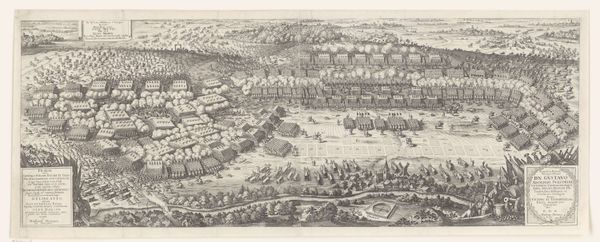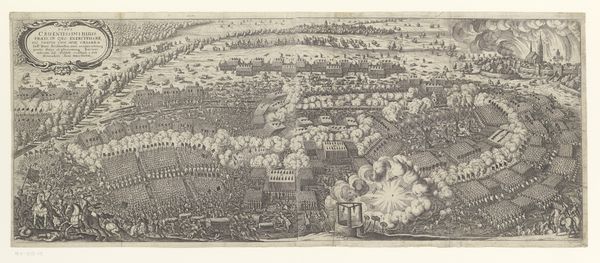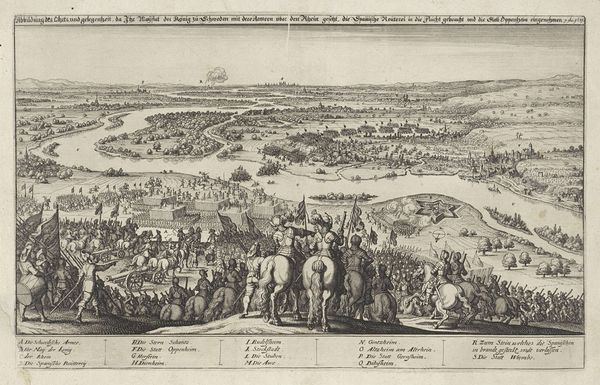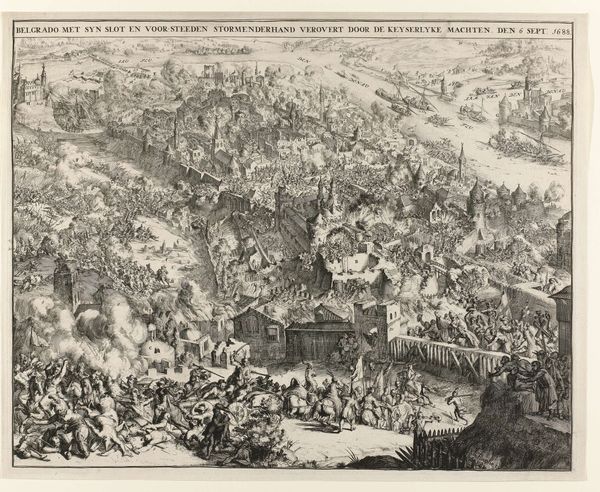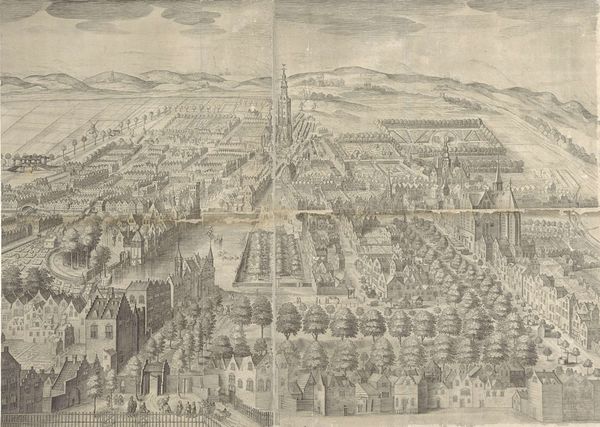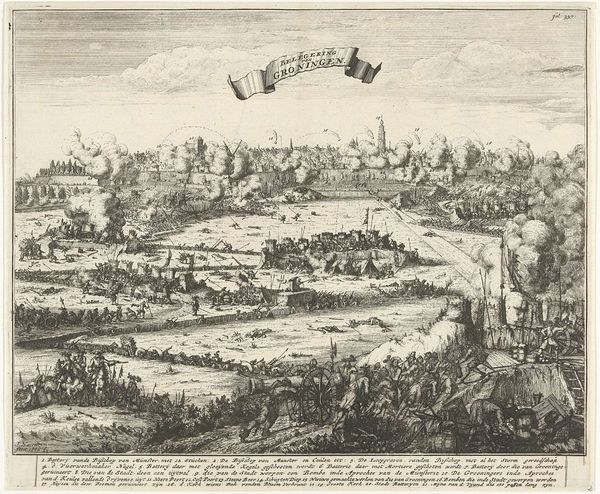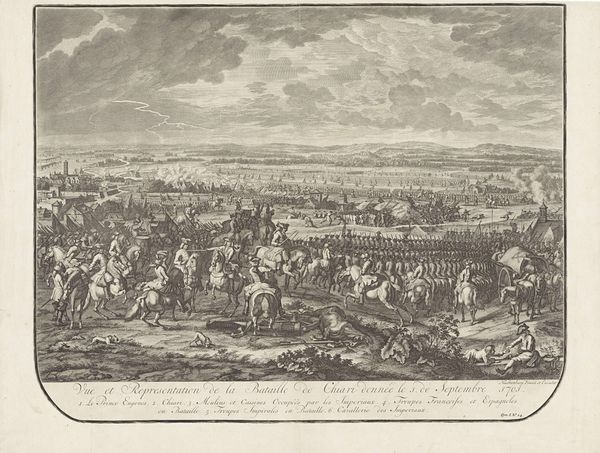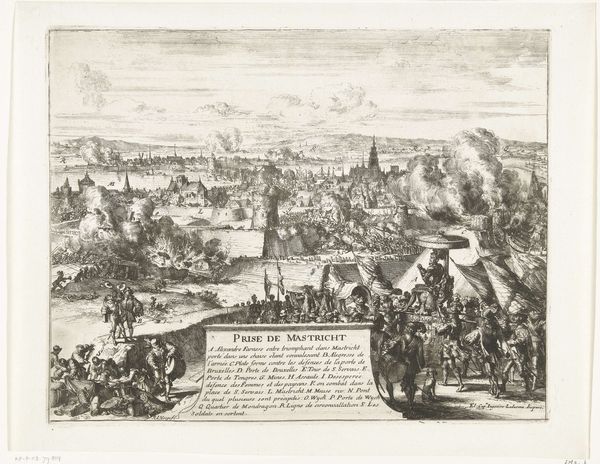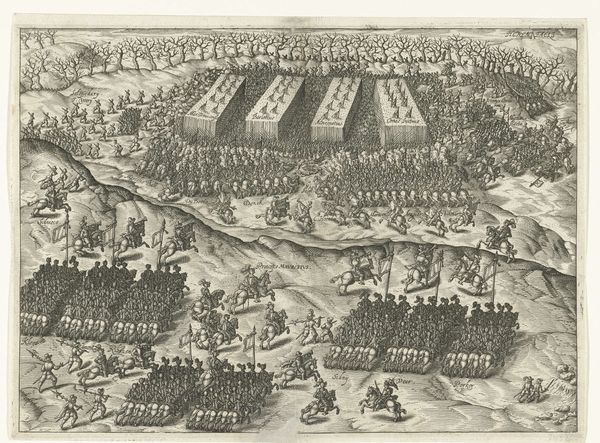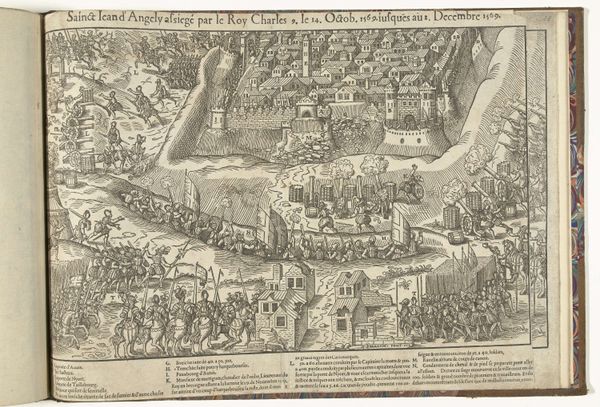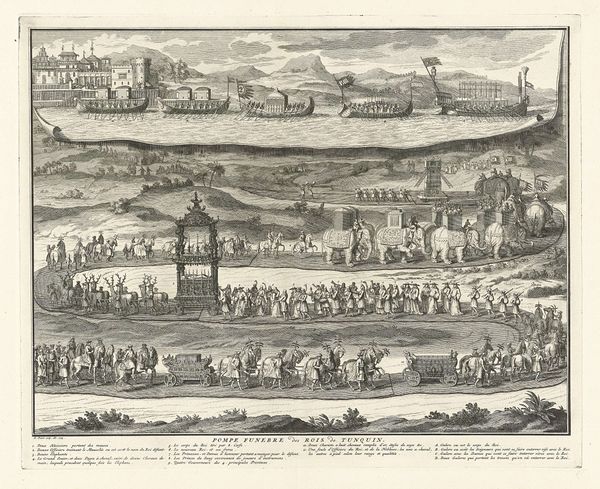
De tocht door Brabant: het Staatse leger voor Tienen (linkerhelft) , 1602 1613 - 1615
0:00
0:00
anonymous
Rijksmuseum
print, engraving
# print
#
landscape
#
history-painting
#
engraving
Dimensions: height 140 mm, width 180 mm
Copyright: Rijks Museum: Open Domain
Curator: This engraving, likely created between 1613 and 1615, depicts “De tocht door Brabant: het Staatse leger voor Tienen”, which translates to “The march through Brabant: the State army before Tienen." The artist is, as is so often the case with historical prints like this one, anonymous. Editor: It’s chaotic, isn't it? Almost dizzying. So many figures packed together, all rendered with the same intensity of detail. It feels like a swarm more than an army, overwhelming in its scale. What were the societal motivations to create such piece? Curator: The image depicts a specific historical moment in 1602 during the Dutch Revolt, part of the Eighty Years' War against Spanish rule. Prints like this served a vital function. This image captures a pivotal military campaign, intended to chronicle Dutch military prowess and perhaps disseminate political messaging to a broader public. Editor: The organization into ordered lines juxtaposed with the chaotic clashes create such symbolic resonance for me. Consider this not just as a document of war, but as a study of societal dynamics of its time: authority, struggle, collective violence. This perspective underscores how images legitimize war—and how images become the symbol of such act! How does the historical context tie to any pre-existing archetypes here? Curator: As to deeper archetypes, the organized army marching toward a walled city has deep roots. Images of sieges appear throughout the history of conflict. Think of the narratives of righteous armies overcoming obstacles to defend or reclaim their territory—we can go back to the Old Testament. But notice also how much this print emphasizes the landscape; one reads war as a kind of scar across this territory. Editor: And thinking about that "scar", I notice the lack of individualization. Each soldier is essentially a mark, one amongst many. It reduces individuals to a collective and promotes this notion that such wars are won by strength in numbers rather than valor of the participants. Does this work glorify war, or simply capture its essence of organized power? It’s difficult to determine given the amount of cultural narratives layered into these iconographies. Curator: That's a vital question and not easily resolved. The neat Latin inscription translates to celebratory lines such as "Eternal you bring Batavis, fatherland and triumph." We see clearly that the intent was to glorify. Looking more analytically, one can detect the more sobering aspects as well. The symbolic content is deeply fascinating for understanding culture at this historical moment. Editor: I find myself conflicted between marveling at the craftsmanship and acknowledging the violent narrative that this represents. This walk was rather more insightful than I expected. Curator: Indeed, looking at this piece in such ways really help to understand not just its face value, but the value that such artistic choices communicate.
Comments
No comments
Be the first to comment and join the conversation on the ultimate creative platform.
